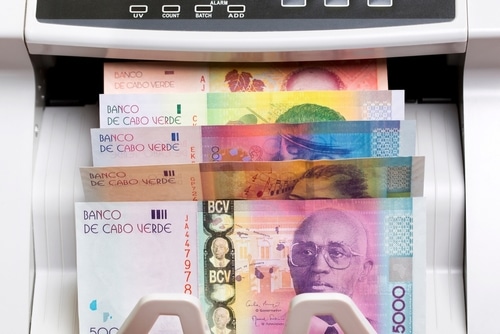Planning a trip to Cape Verde or looking to send money to loved ones there? Understanding the Cape Verdean escudo (CVE) is essential. Named after the Portuguese word for “shield,” this currency reflects Cape Verde’s unique history and its strong connection to both Africa and its Portuguese heritage.
Whether you’re visiting the stunning islands or engaging in financial transactions like money transfers, this guide will walk you through everything you need to know about the Cape Verdean escudo. We’ll cover its history, exchange rates, and how to handle this currency when conducting business or traveling.
By the end, you’ll have a complete understanding of the Cape Verdean escudo, its value, and the best ways to ensure smooth money management while dealing with it.
What is the Cape Verdean Escudo?
The Cape Verdean escudo is the official currency of Cape Verde, an archipelago of ten volcanic islands in the central Atlantic Ocean. The currency uses the symbol “$” and is often abbreviated “CVE.” Locally, it is referred to as simply “escudo.”
Key Facts About the Escudo
- ISO code: CVE
- Banknotes: Available in denominations of 200, 500, 1,000, 2,000, 2,500, and 5,000 CVE.
- Coins: Come in values of 1, 5, 10, 20, 50, and 100 escudos.
The Cape Verdean escudo is pegged to the euro (EUR) at a fixed exchange rate of 1 EUR = 110.265 CVE, providing stability and predictability in international transactions.
A Brief History of the Cape Verdean Escudo
Cape Verde introduced its own currency, the escudo, in 1914 to replace the Portuguese real as the nation became a Portuguese colony. While Cape Verde gained independence in 1975, the escudo remained tied to Portugal’s currency until the adoption of the euro.
The fixed peg of the escudo to the euro highlights Cape Verde’s stable governance and commitment to global economic standards. It also bolsters trust among tourists and investors using the currency.
How Does the Exchange Rate Work?
Since the CVE is pegged to the euro, it enjoys stable exchange rates. However, if you’re exchanging other global currencies like the U.S. dollar (USD), rates will vary slightly based on fluctuations in the euro-dollar relationship.
To give you a snapshot, here’s an example of approximate values you can expect:
- 1 USD ≈ 103-107 CVE
- 1 GBP ≈ 125-130 CVE
Note: The rates might differ depending on where you exchange your money, as banks, currency exchange services, and online remittance platforms often include small fees or markups.
Navigating the CVE When Traveling
Where to Get Cape Verdean Escudos
If you’re traveling to Cape Verde, there are different ways to access local currency:
- ATMs: Convenient and widely available in urban areas across Cape Verde. They often offer competitive rates.
- Currency Exchanges: You can exchange foreign currencies at banks or authorized exchange offices upon arrival.
- Hotels: Many hotels offer currency exchange services, but be aware that these may involve higher fees.
Currency Tips for Travelers
- Use Cards Where Possible: Credit and debit cards are widely accepted in major tourist regions, especially in hotels, restaurants, and shops. However, smaller, more rural areas often rely on cash.
- Carry Small Denominations: Smaller notes and coins make it easier to handle everyday expenses like transportation and markets.
- Plan for Fees: When converting money in Cape Verde, watch out for transaction fees, both in exchanges and at ATMs.
Sending Money in CVE
If you’re sending money directly to Cape Verde, understanding how services handle the Cape Verdean escudo can make a significant difference in both cost and efficiency.
Benefits of Sending Money Towards CVE
- Fair Exchange Rates: Services that promise transparent, real-time currency rates help avoid hidden fees.
- Fast Transactions: Choose platforms that offer same-day transfers for time-sensitive support.
- Secure Delivery: Look for companies with extensive security protocols, ensuring funds arrive safely into your recipient’s hands.
Tip: Currency-conversion-friendly remittance services like Remitly enable you to send CVE seamlessly while keeping fees low.
The Role of CVE in Cape Verdean Society
It’s worth noting that the Cape Verdean escudo is not simply a transactional necessity but an important cultural token as well. Vibrant images of historic figures, picturesque landscapes, and local flora adorn escudo banknotes, showcasing Cape Verde’s rich heritage.
Additionally, the escudo’s steady international exchange fosters Cape Verde’s burgeoning tourism sector, ensuring stability for local economies dependent on foreign visitors.
Fun Fact
The designs on escudo coins and notes often spark conversation among visitors. For example, colorful depictions of the islands and famous Cape Verdeans like Amílcar Cabral (found on the 5,000 CVE note) make the currency a visual treat!
Advantages of the Escudo Peg to the Euro
By pegging the CVE to the euro, Cape Verde has avoided the severe inflation challenges seen in other regions. For businesses and individuals dealing with the escudo, this stability means predictable pricing in international markets.
Whether you’re a tourist planning a trip or a business owner managing finances with Cape Verdean partners, you can feel confident handling the escudo without worrying about extreme currency fluctuations.
What’s Next?
The Cape Verdean escudo, while unique, is remarkably traveler- and transaction-friendly. From its fixed euro exchange rate to its vibrant cultural significance, it serves as both a daily tool and a window into Cape Verde’s charming identity.
If you’re planning to send funds, explore flexible and secure remittance services like Remitly to transfer CVE directly to loved ones or businesses in Cape Verde. With competitive exchange rates and low fees, you can be sure every escudo ends up where it’s needed most.
